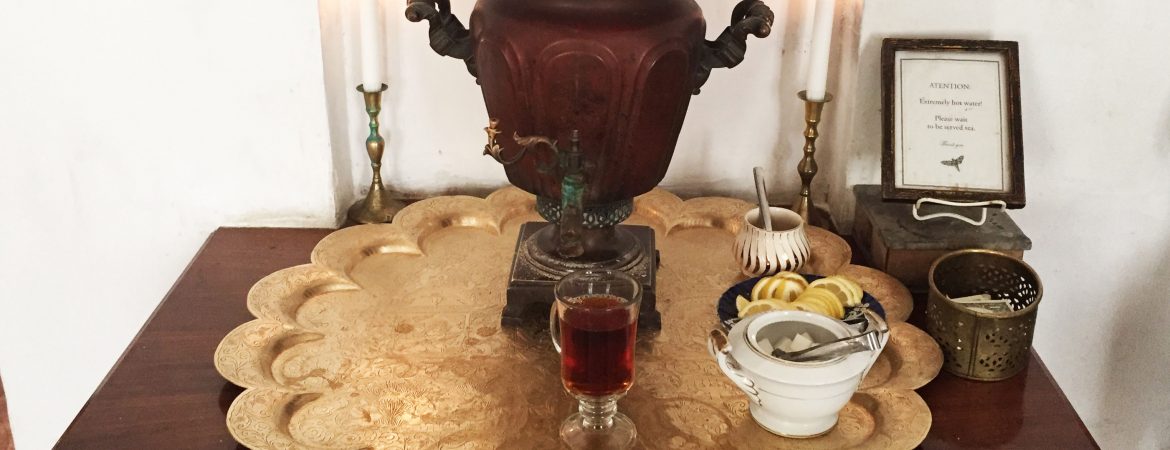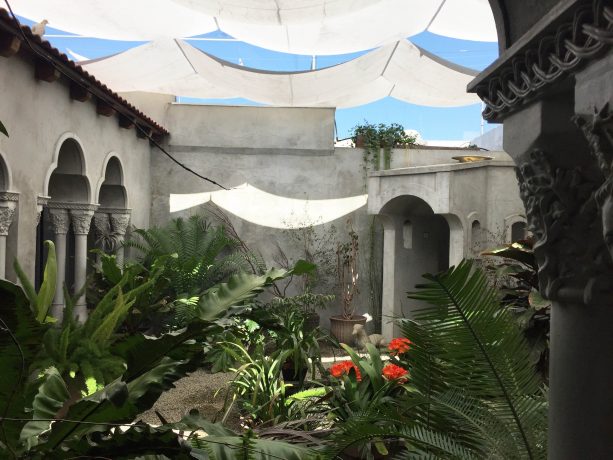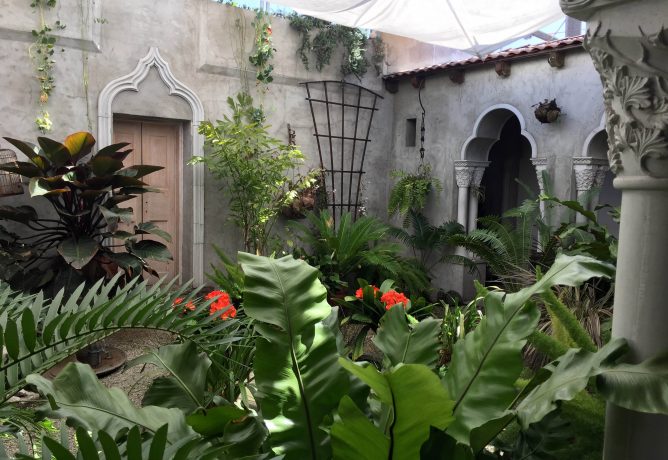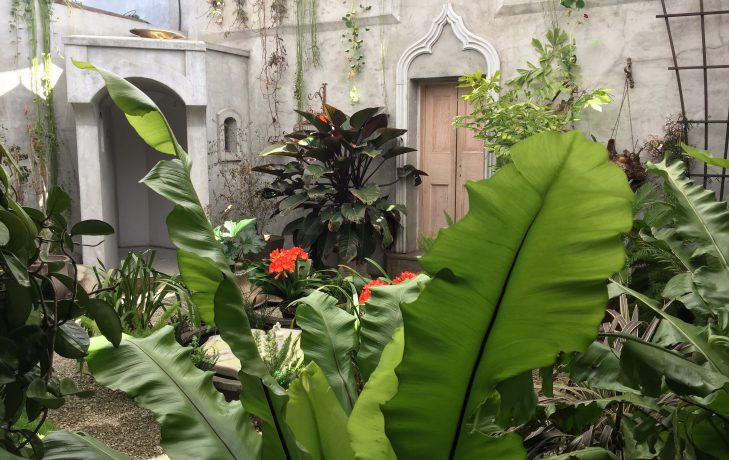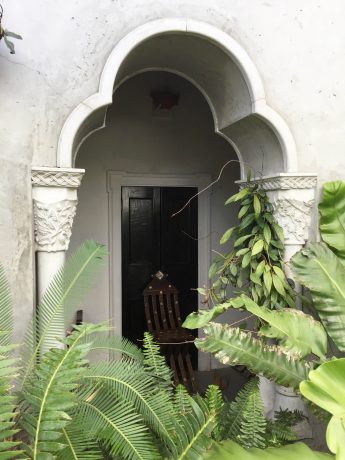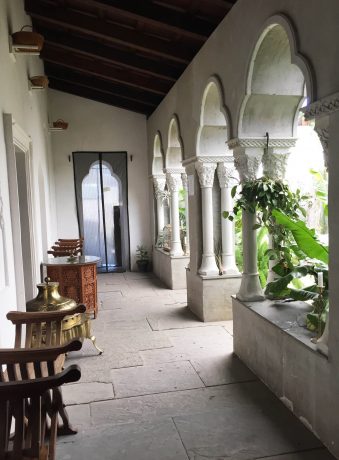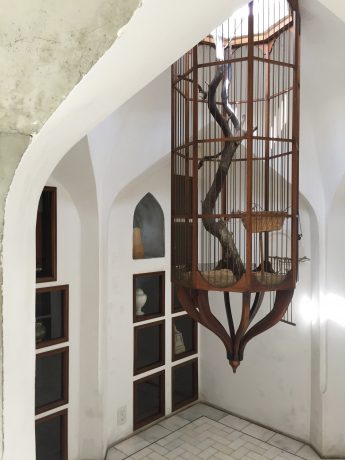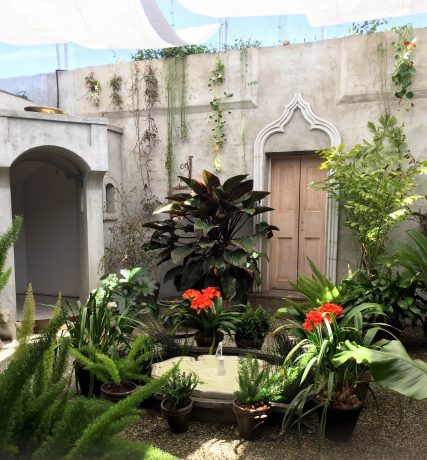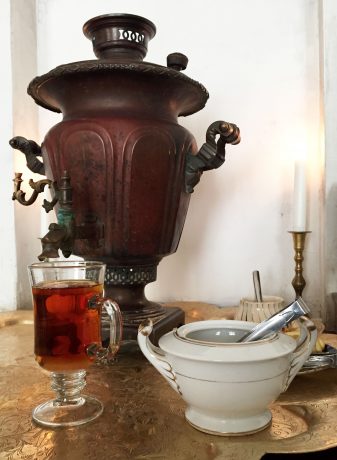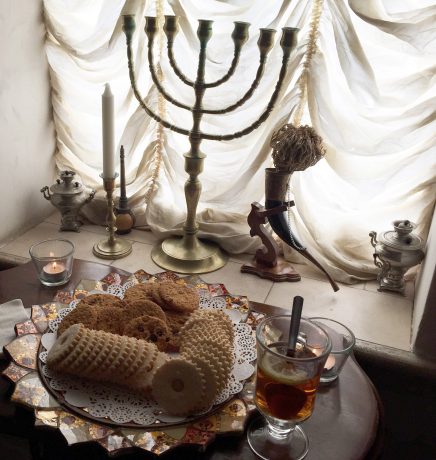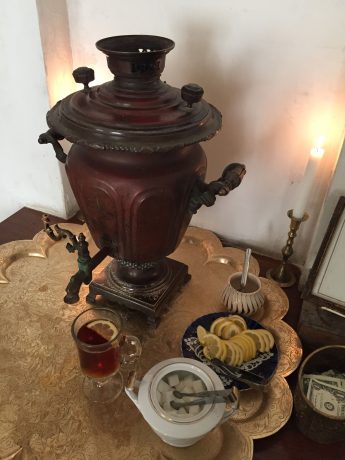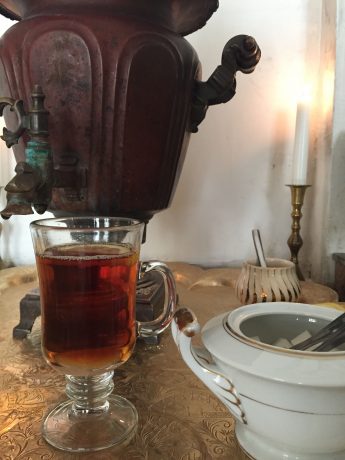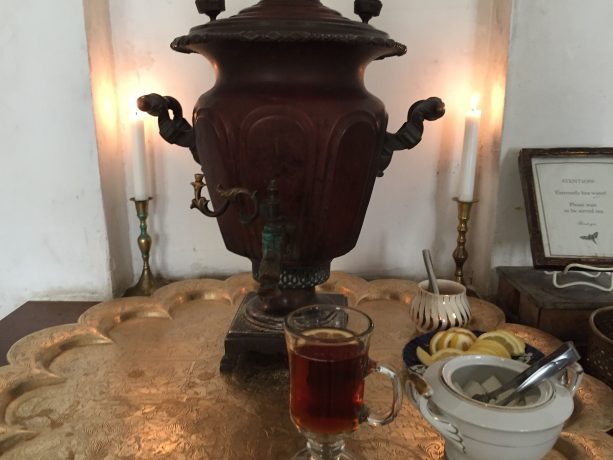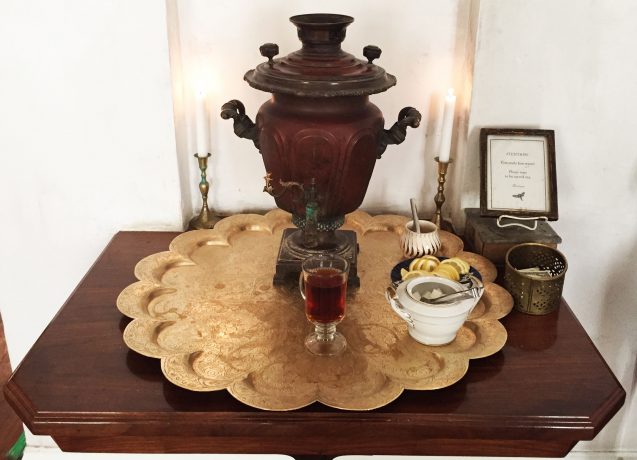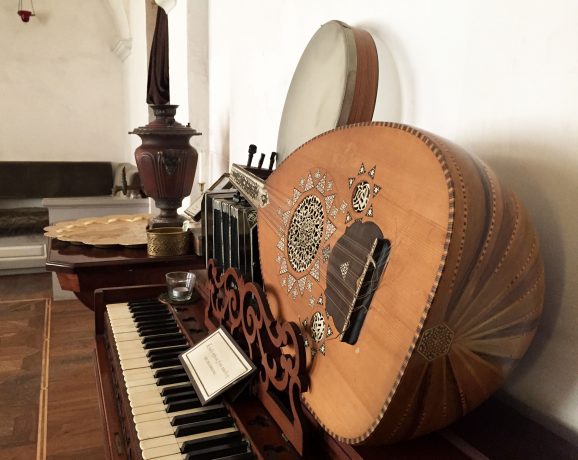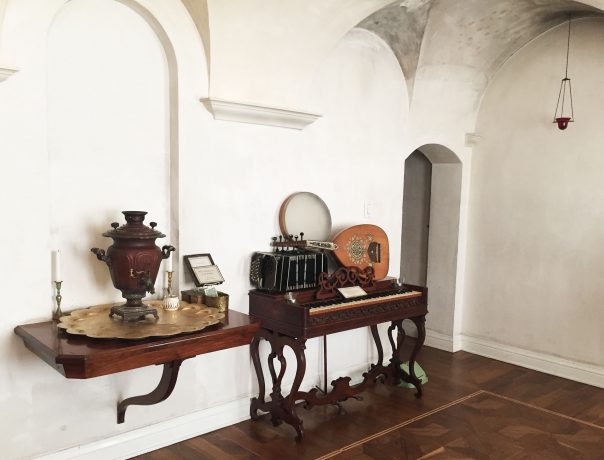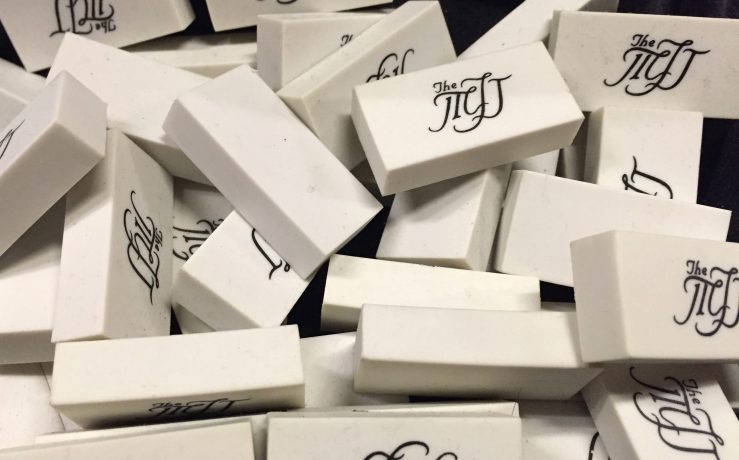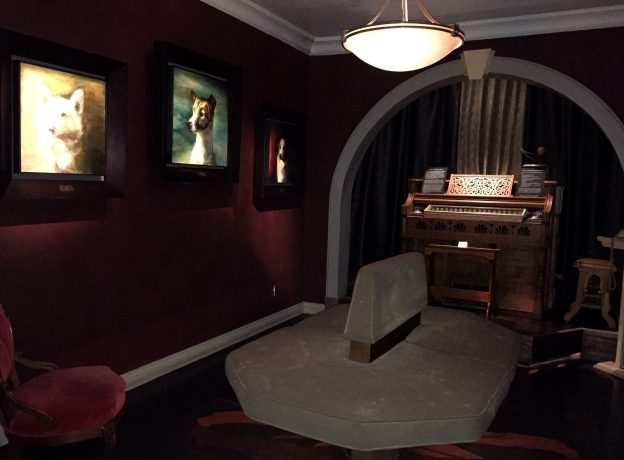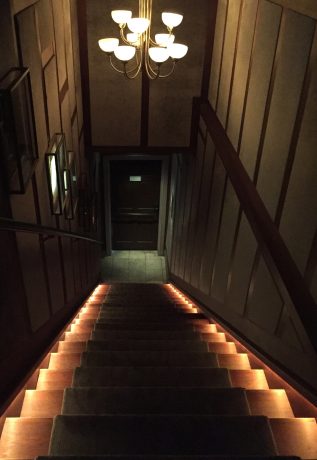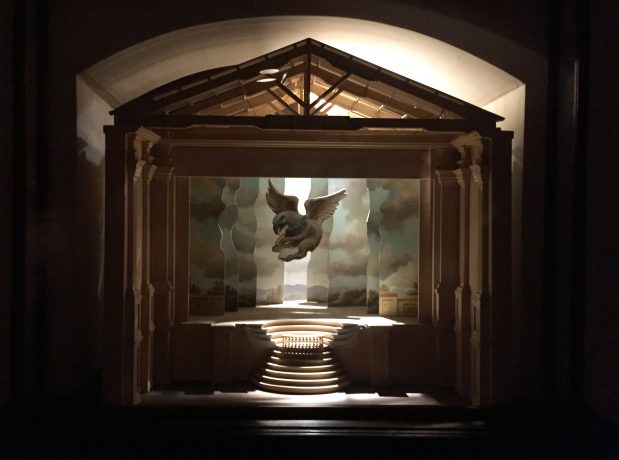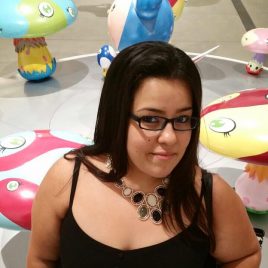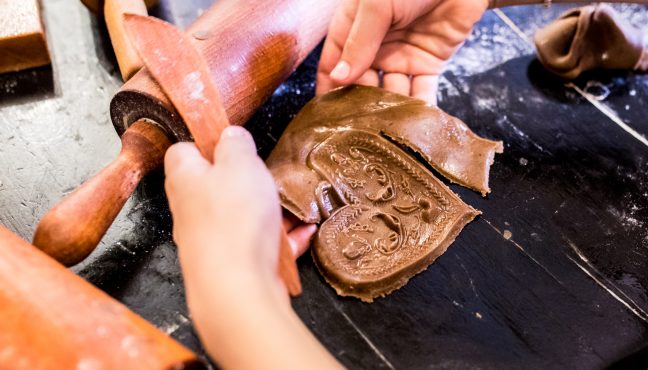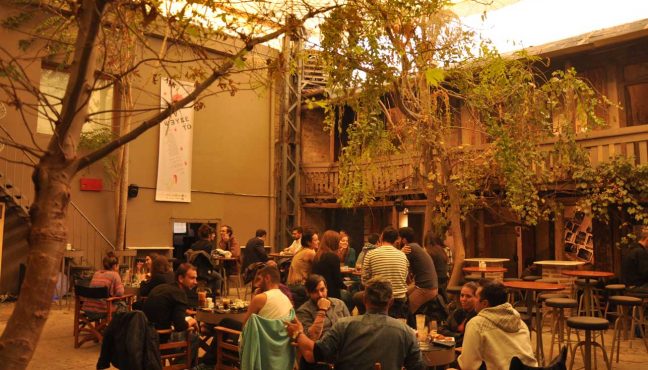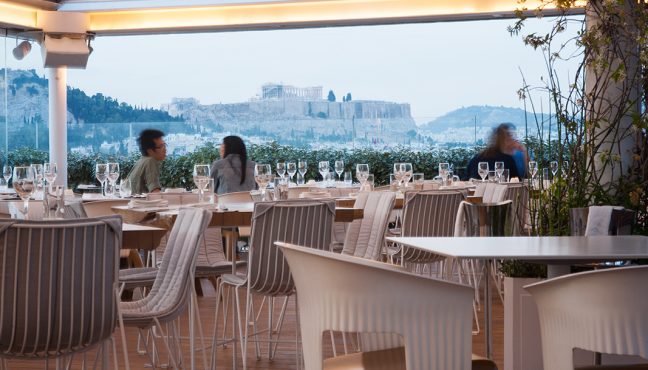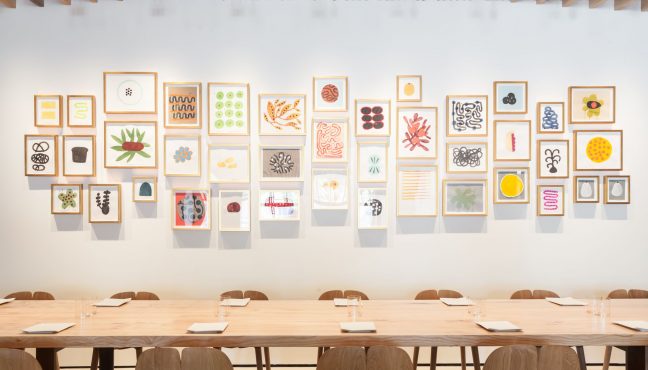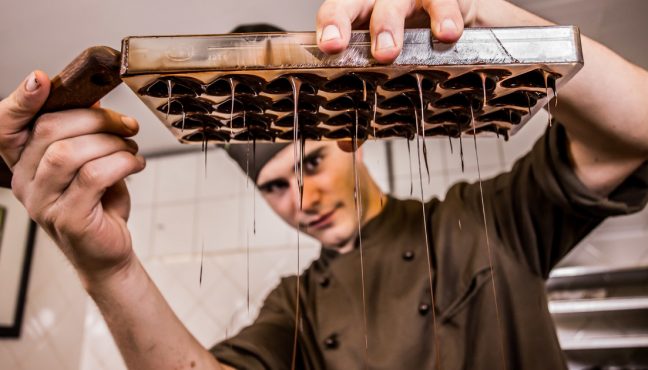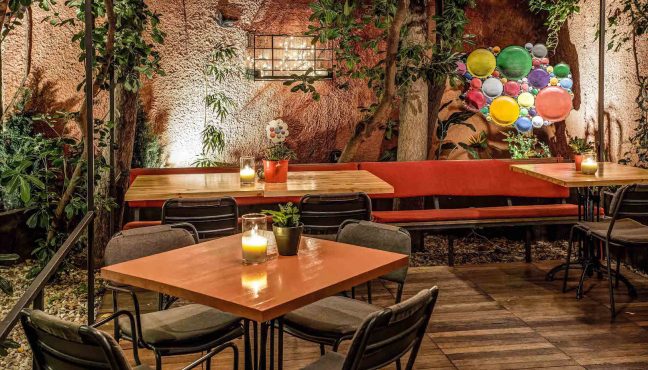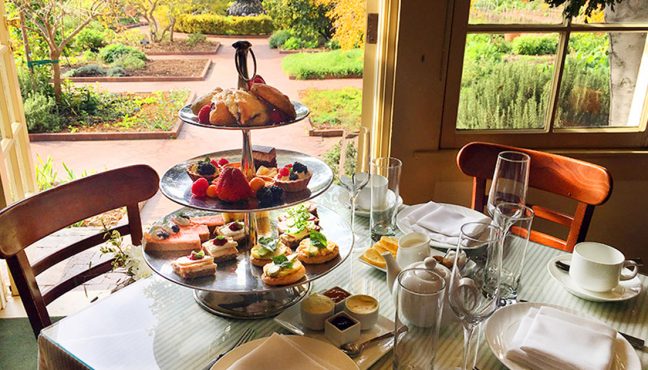Museeum recently ventured into the mysterious treasure that is the Museum of Jurassic Technology. Located in the heart of Culver City in Los Angeles County, MJT welcomes guests to witness their permanent collection, Tula Tea Room, and glorious rooftop garden. Tula is a truly unique experience in which Nanuka Tchitchoua & Tula (a beautiful Silken Wind Hound, named after the Tea Room) hosts a traditionally Russian Tea Ceremony for all the guests of the museum free of charge.
Unlike most museums in Los Angeles, MJT has a unique aura and prospectus, closer in nature to a sixteenth-century cabinet of wonders than any contemporary art space. Within its permanent collection, one can come across truly uncommon yet majestically curated experiences, such as Garden of Eden on Wheels: Collections from Los Angeles Area Mobile Home Parks, featuring a series of space-pod-like contraptions that host an assortment of objects which are presumably from the wonders of mobile homes, or Lives of Perfect Creatures: Dogs of the Soviet Space Program, a selection of canine portraits.
The Museum of Jurassic Technology is structured in a way to allow innate curiosity to take over, the labyrinthine rooms and passages into each and every exhibition cause one to wonder around the space confused. The tight corridors, lack of light and sounds coming from back rooms can certainly be overwhelming and perplexing. The entire experience, however wonderful, can make one anxious, as one wanders through the space to make sense of the experience. I found myself time and time again engulfed in the text labels that accompany the works, only to turn to encounter another individual in close proximity to me (I may or may not have also crashed into some people while taking closer looks at certain objects and getting entranced in their beauty).
Needless to say, coming into a cabinet of wonders (especially in this day and age) can leave one overwhelmed and confused. However, MJT—a holistic institution unlike any other—has taken these possible reactions into consideration and provided the ultimate slice of heaven as the zenith of the museum experience. Tula Tea Room is a truly magical, meditative and contemplative space of peace and serenity on the top floor of the museum.
At Tula Tea Room, Nanuka (Nana) & Tula host a tea ceremony in the Georgian tradition. Georgia, a country south of Russia and north of Turkey and Armenia, shares many traditions that closely align to Russian aesthetics. As Nana mentions, “tea is a ceremony, in the old world everyone has a tea room.” Nana, a visual artist herself and graduate of Cal Arts, understands the meditative nature of a tea ceremony as a peaceful, serene and almost therapeutic convergence. In her own words “tea is an artform.”
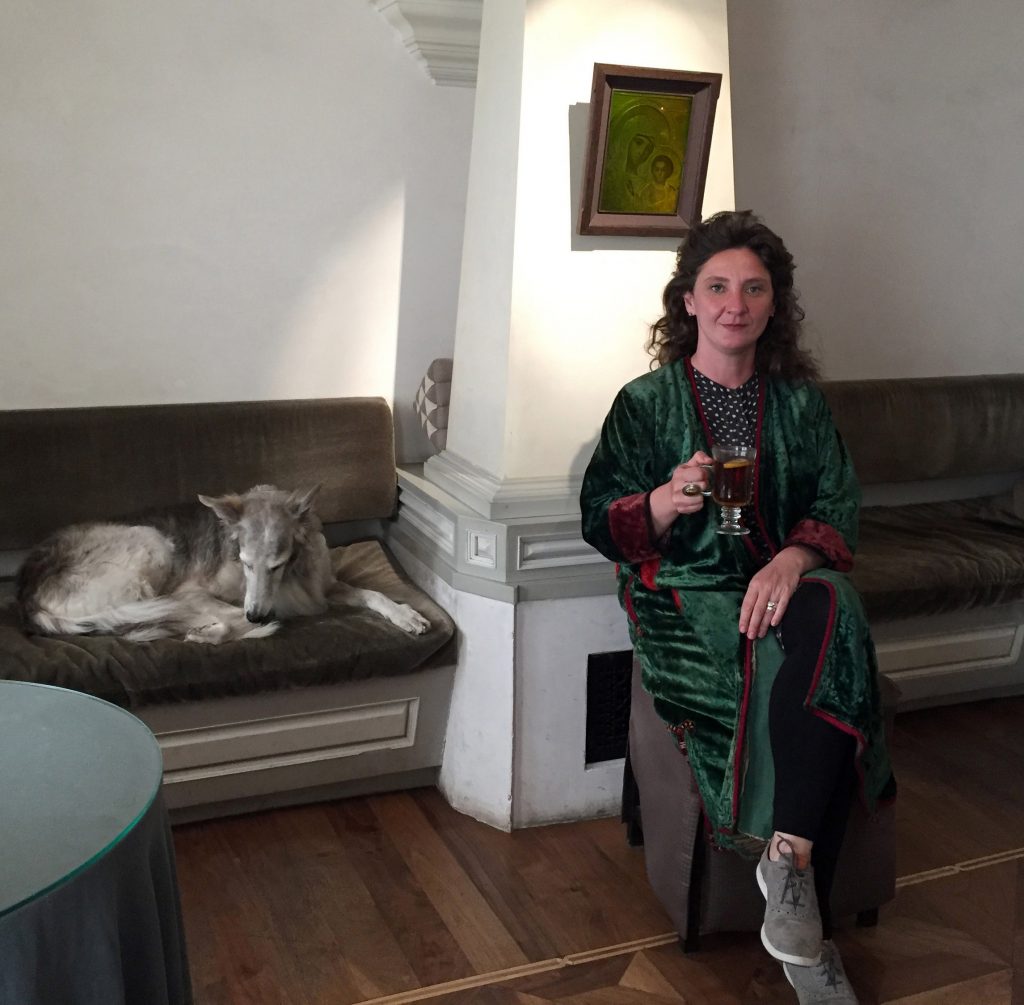
The Tea Room and the gorgeous Silken Wind Hound are both named after a city in Russia, located a few hours south of Moscow. Tula is renown for their pryaniki (gingerbread), cookies made with honey and spices, and considered the center of the production of samovars, aside from being the home and burial place of Leo Tolstoy, author of Anna Karenina many other wonderful novels.
During the ceremony, a samovar (large metal container heated with coal) serves to boil the water, while the tea concentrate sits at the top where it is kept warm. Nana places lemon slices and sugar cubes near the samovar so guests can customize their tea, while a table a few steps away contains a plate of cookies. Nana can be found near by to address any questions about the ceremony should guests have any.
The baroque style samovar, similar in nature to those traditionally made in Russia during the eighteenth century, serves as the center of the room and experience. Guest are welcome to enjoy a cup of tea at either the adjacent sitting area comprised of couch like fixtures and chairs, or to venture into the rooftop garden to sip their black tea.
The rooftop garden, however, feels almost other-worldly. On the weekends Museum Director David Wilson, ventures into the garden to play the nickelharpa—a traditionally Swedish string musical instrument. Within the garden, various flowers and plants serve to entice guest to get lost in time as they sit and appreciate a quasi-Moroccan, quasi-French garden enclosed by trefoil arches and doors that lead nowhere. A fountain at the center gives it a lyrical sense of Zen, while one of the passageways leads to an aviary.
I’ve been fortunate to lose countless hours in this space, sipping black tea, entranced by the wonders of the garden, while the nickelharpa plays in the background; I have seen countless of children play here, while adults enjoy the exceptional serenity afforded by the location. Unlike any other museum in the city, one can lose all sense of time and space in this beautiful convergence.
The countless labyrinth-like exhibition display rooms that make one wonder in the dark, the quaint gift shop where one can find anything from protective auditory mimicry earrings, to the stereo floral radiography of Al Richards available for a view-master, Tula Tea Room, and the rooftop garden all exist in a timeless paradigm.
The Museum of Jurassic technology has managed to transcend the contemporary expectations of our times, and was able to transport me into a sixteenth-century like cabinet of wonders, in which exhibitions can be out of order, magnetic oracles can dance, and wheels made up of bells serve as music instruments, a magical universe in which Silken Wind Hounds host traditional Georgian tea ceremonies. A timeless experience in which my curiosity roamed free to wonder at a magical museum space unlike any other.
